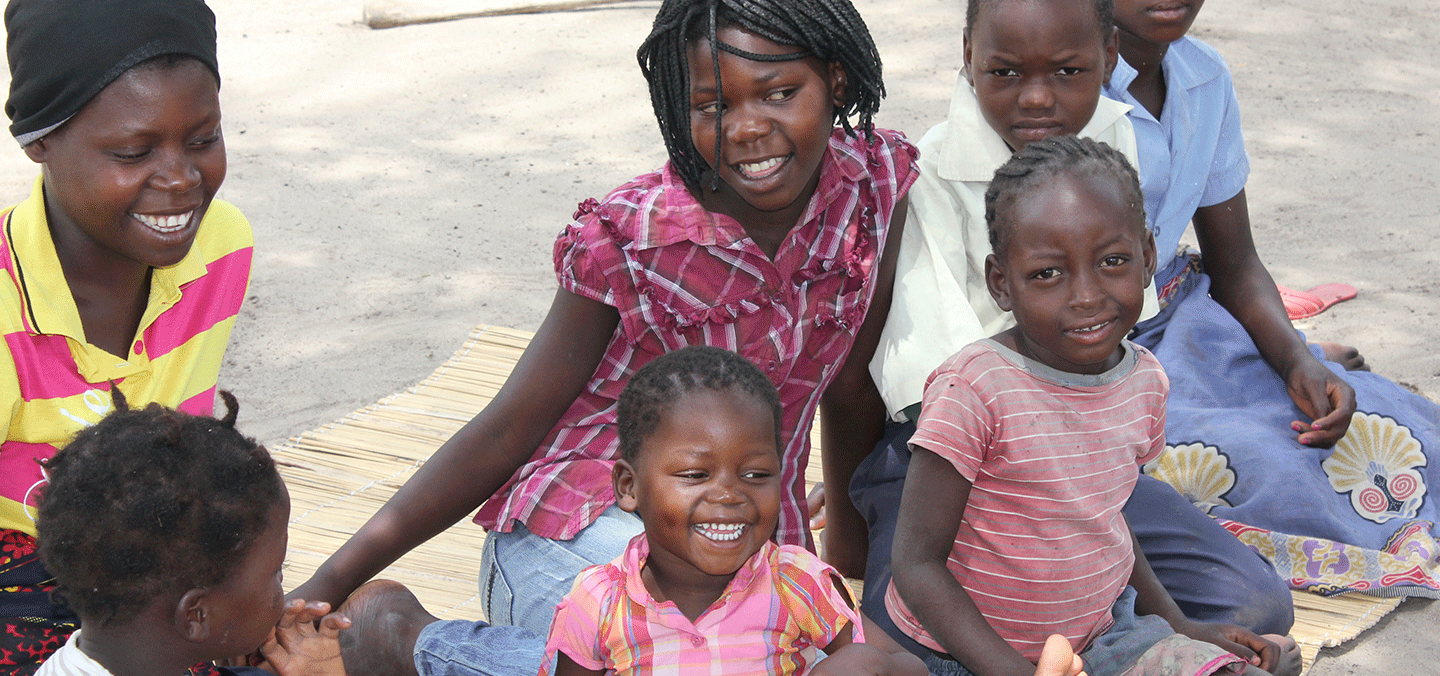Maternal, Child and Reproductive Health
This initiative supports the global efforts to ensure that all women and children, regardless of where they live or are born, have access to quality health care services.

Despite remarkable global progress, the most essential maternal and reproductive health interventions still do not reach the poorest and most vulnerable women, girls and children in the developing world.
Although the number of maternal and child deaths has decreased considerably, the Sustainable Development Goals on Health (SDG3) that focus on reducing maternal (SDG3.1) and child mortality are far from being reached. Half of women in developing regions do not receive the recommended amount of health care they need. Around 285,000 women die every year as a result of complications related to pregnancy, childbirth or postpartum, and almost all of these preventable deaths occur in developing countries. The difference in maternal mortality rates between developed and developing countries is the biggest global health inequity today. Moreover, every year more than eight million children under five years of age die from preventable causes, many within the first month of life. Most maternal, child and adolescent deaths and stillbirths are concentrated in just two regions: sub-Saharan Africa and South Asia. The difference in maternal mortality figures between developed and developing countries is the greatest global health inequity that exists today. A woman in sub-Saharan Africa has a 130 times greater risk of dying from causes related to pregnancy or childbirth than a woman in Europe or North America. In addition, more than five million children under the age of five die each year from preventable or treatable causes, many of them in the first month of life. A child born in a low-income country has an average life expectancy at birth of about 63 years, compared with 80 years in a high-income country.

Despite progress over the last decade, women and children still face disproportionate inequalities in access to and quality health care
Clara Menéndez, Director of the Maternal, Child and Reproductive Health Initiative
Coverage of prenatal care, skilled attendance at birth and postnatal care or family planning is far from reaching all women in low- and middle-income countries, a factor that puts them at high risk of death or disability. This situation has been exacerbated in recent years by the COVID-19 pandemic and makes it all the more necessary to strengthen the efforts of the Development and Research community to improve access to the most basic quality health services for women, children and adolescents in developing regions and to address the current crisis.
Maternal, newborn and under-five mortality in low- and middle-income countries is greatly affected by indirect causes: HIV/AIDS, malaria and tuberculosis. Furthermore, the lack of reliable data on levels and causes of deaths remains an obstacle to progress on the SDGs and needs to be seriously addressed at country and global levels.
Key facts
Improving the health of the most fragile and marginalized populations, such as pregnant women, children under five and adolescents in developing countries, is a priority for ISGlobal. The Maternal, Child and Reproductive Health Initiative, which integrates all of the institute's areas of action (research, training, technical assistance, analysis and incidence), generates knowledge, innovation and capacity through projects and activities in the following fields:
Malaria in Pregnancy: Malaria infection during pregnancy is a major cause of maternal and neonatal mortality, mostly due to low birth weight and prematurity, and to maternal anaemia and maternal infection (placental parasitemia). As a result, an estimated 10,000 women and 200,000 infants die every year in Africa. In this area our work is currently focused on operational research and technical assistance to improve coverage of intermittent preventive treatment against malaria in pregnancy (IPTp) in endemic countries (TIPTOP); and studies of drug resistance and pharmacovigilance, as well as possible interactions between antimalarials and antiretrovirals in pregnant women and children (MAMAH, Pyrapreg, HIVDR). Previous studies in this area include: safety and efficacy of alternative treatments to sulfadoxine-piremethamine for IPTp (MIPPAD); epidemiological and clinical characteristics of Plasmodium vivax malaria in pregnancy (PregVax); cost-effectiveness of interventions to control malaria in infants and pregnant women; and intermittent preventive treatment in infants (IPTi) to prevent malaria in the first year of life (following these results, the WHO recommended IPTi in endemic areas). As well as operational research to improve coverage of intermittent preventive treatment against malaria in pregnancy (IPTp) in endemic countries (TIPTOP).
Childhood malaria: We are conducting research aimed at evaluating the impact of azithromycin plus intermittent preventive treatment with sulfadoxine-pyrimethamine (IPTi-SP) administered through the Expanded Program on Immunization (EPI) on all-cause mortality at 18 months of age in young children living in areas of high mortality and malaria burden in sub-Saharan Africa, as well as: assess implementation bottlenecks for scaling up ITPi-SP through EPI in Sierra Leone (ICARIA) and maximize the delivery and uptake of IPTi (now PMC), to achieve the full potential and effectiveness of this intervention through its scale-up to the second year of life in Sierra Leone, Togo and Mozambique (MULTIPLY).
Previous studies in this area include the implementation and evaluation of Intermittent Preventive Treatment for Infants (IPTi), a cost-effective strategy to prevent malaria in the first year of life, the results of which led WHO to recommend the implementation of IPTi in malaria endemic areas.
Maternal immunisation: Maternal immunisation offers an exceptional opportunity to protect women and their babies from diseases that cause substantial morbidity and mortality. We work to determine the burden of vaccine-preventable diseases that affect pregnant women and their infants, and then evaluate vaccination during pregnancy in low-resource countries (RESPIRE, VITAL).
Emerging diseases in pregnancy such as Zika or COVID-19, through projects focused on prevention and treatment strategies for SARS-CoV-2 infection during pregnancy (COVIDPreg, SARA).
Causes of death: One of the problems that continues to hamper progress in the reduction of maternal and child mortality in developing regions is the lack of reliable data on the levels and causes of mortality. To that end we are working to design, validate and implement Minimally Invasive techniques for investigating causes of death in low-resource settings and in different cultural, religious and geographical backgrounds. Minimally Invasive Tissue Sampling (MITS) is a technique that consists in using very fine needles to recover tissue samples from different organs, and analysing such tissues through anatamopathological and microbiological techniques, thus allowing an accurate establishment of the cause of death. In contrast to the complete autopsy, MITS can be performed by specially trained technicians and with limited infrastructure. The technique was developed through the CADMIA and CADMIA-plus projects, set the basis for CHAMPS, a global child mortality prevention and surveillance network, and has become the cornerstone of a new pathology-based surveillance alliance.
Inequalities in maternal and reproductive health: As part of the efforts to achieve SDG3 on health (targets 1 and 2 on maternal and child health), SDG5 on gender equality (targets 1 and 6) and SDG10 on reducing inequality within and between countries, we work to generate evidence on inequalities in access to quality RMNCAH services and on the factors contributing to such inequalities in low-resource settings.
Capacity building: Through short courses, leadership workshops, participation in ISGlobal's Master in Global Health and collaborations with other academic institutions and development, we carry out training and technical and leadership capacity building activities for health professionals and researchers preferably from low and middle income countries.
Finally, we carry out evidence-based health policy advocacy, technical assistance activities and participation in specialized forums and international networks and initiatives, so that the knowledge generated contributes to advancing the global health agenda of the most vulnerable women and children in developing regions.
ISGlobal is a member of the WHO-Roll Back Malaria Working Group on Malaria in Pregnancy (RBM MiPWG), which aims to align RBM partners on best practices and lessons learned in MiP programming to help achieve higher coverage in MiP interventions globally. As well as the Partnership for Women's, Children's and Adolescents' Health (PMNCH), the world's largest alliance committed to protecting and advocating for the health, well-being and rights of women, children and adolescents, and the United Nations' Every Women Every Child initiative to end all preventable maternal, newborn and child deaths, including stillbirths, by 2030, and to improve their overall health and wellbeing.

Our Team
Initiative Director
-
Clara Menéndez Santos
Initiative Coordinator
-
 Anna Lucas Coordinator of the Maternal, Child and Reproductive Health Initiative
Anna Lucas Coordinator of the Maternal, Child and Reproductive Health Initiative
ISGlobal Team
-
 Azucena Bardají Associate Research Professor
Azucena Bardají Associate Research Professor -
 Andreu Bofill Data Manager
Andreu Bofill Data Manager -
 Cristina Enguita Assistant Research Professor
Cristina Enguita Assistant Research Professor -
 Raquel González Associated Researcher
Raquel González Associated Researcher -
 MONTSE PI Project Assistant
MONTSE PI Project Assistant -
 Llorenç Quintó Biostatistician
Llorenç Quintó Biostatistician




